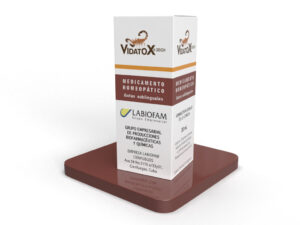For individuals navigating a serious health condition, such as cancer, medical treatments often take center stage—ranging from chemotherapy and radiation to targeted therapies and surgeries. While these interventions are vital, many accounts from survivors and healthcare observers suggest that focusing on physical empowerment through strategic nutrition and exercise may further support the body’s capacity for healing. Below is an exploration of how dietary adjustments, mindful exercise routines, and holistic self-care can complement standard protocols and potentially aid in the journey toward remission.
Understanding the Need for Holistic Physical Care
When facing a life-threatening illness, the body endures tremendous strain—both from the disease itself and from aggressive treatments. Proper nourishment and appropriate physical activity can help mitigate some of that stress. Though they do not replace medical interventions, these approaches may enhance overall well-being, reduce side effects, and offer a sense of personal agency.
Many individuals describe a significant shift in how they view their bodies during challenging illnesses. Rather than seeing it merely as a battleground for disease versus treatment, they begin to regard it as an ally in the healing process. By adopting targeted nutritional plans and consistent exercise habits, they aim to fortify this ally, providing the best possible conditions for recovery.
The Nutritional Foundation
Nutrition forms the cornerstone of physical resilience. A balanced, well-rounded diet offers the body essential vitamins, minerals, antioxidants, and macronutrients to maintain immune function, muscle integrity, and energy levels. While specific dietary needs can vary, several general principles emerge as valuable for those seeking remission:
- Increased Fruit and Vegetable Intake: Colorful fruits and vegetables—such as berries, citrus fruits, leafy greens, bell peppers, and cruciferous vegetables—tend to be rich in vitamins, minerals, and antioxidants. These compounds may help counteract inflammation and oxidative stress, both of which can tax the immune system.
- Whole Grains and Legumes: Foods like oats, brown rice, quinoa, beans, and lentils provide complex carbohydrates that release energy slowly, stabilizing blood sugar levels. They also contain fiber, which supports healthy digestion and may contribute to a balanced gut microbiome—a factor linked to immune health.
- Lean Proteins or Plant-Based Alternatives: Whether choosing lean meats, fish, eggs, or plant-based protein sources (like tofu, tempeh, or chickpeas), adequate protein intake helps maintain muscle mass and supports tissue repair. Many individuals also opt for fatty fish, such as salmon or mackerel, due to potential anti-inflammatory benefits associated with omega-3 fatty acids.
- Limiting Processed Foods and Sugars: Processed snacks and beverages high in refined sugars can contribute to erratic energy levels and spikes in inflammation. For some, gradually reducing these items in favor of natural sweeteners (like fruit) or healthier snack options (like nuts, seeds, or yogurt) can yield noticeable improvements in daily vitality.
- Hydration: Proper hydration supports every bodily system, from digestion to circulation. Water, herbal teas, and low-sugar beverages are commonly recommended, while sweetened or caffeinated drinks may require moderation.
While no single diet guarantees remission, many find that sustained nutritional improvements boost energy, enhance tolerance for medical treatments, and promote a sense of control over daily well-being.
The Role of Exercise and Movement
Exercise, in its many forms, serves as the second pillar of a well-rounded physical empowerment strategy. Engaging in movement can appear daunting for someone undergoing cancer treatments, especially if fatigue or pain is a significant concern. However, research and anecdotal accounts point to numerous potential benefits of gentle, consistent activity:
- Maintaining Muscle Mass: Prolonged bed rest or a sedentary lifestyle can lead to muscle wasting, further weakening the body. Light resistance exercises, whether with small weights or bodyweight routines, may slow this process and keep the musculoskeletal system more robust.
- Boosting Circulation: Gentle exercise such as walking, swimming, or tai chi helps improve blood flow, delivering oxygen and nutrients to tissues and supporting waste removal. This circulation boost may aid recovery, especially in tandem with a strong nutritional plan.
- Enhancing Emotional Well-Being: Physical activity triggers the release of endorphins—chemicals that act as natural mood lifters. For many individuals, engaging in a 10- to 20-minute walk or a slow-paced yoga session each day can reduce anxiety, mitigate depression, and improve self-image.
- Supporting Lymphatic Function: The lymphatic system, crucial for immune defense, relies on muscle contractions to move lymph fluid throughout the body. Moderate exercise can facilitate this process, potentially aiding immune surveillance and detoxification.
Integrating Mindful Eating and Movement
While diet and exercise each provide distinct advantages, their combined effect can be even more powerful when integrated mindfully. One method of blending nutrition and movement is by synchronizing meal plans with exercise routines:
- Pre- and Post-Workout Nutrition: Consuming a light, balanced snack—like fruit with nut butter—before a gentle exercise session can provide sustained energy. Afterward, a meal containing lean protein and healthy carbohydrates may support muscle recovery and replenish glycogen stores.
- Mindful Eating During Activity: Some individuals enjoy a slow-paced walk soon after a light meal, using the time to appreciate flavors and sense how their body reacts. This approach can encourage intuitive eating, helping them recognize satiety and avoid overeating.
- Meal Prep and Movement Breaks: Another strategy is to break up meal preparation with brief activity bursts—such as gentle stretching or squats while waiting for water to boil. This micro-workout concept ensures consistent movement throughout the day, complementing an overall healthy diet.
By weaving exercise into mealtimes, people can maintain stable energy levels and keep blood sugar fluctuations in check, two factors that may enhance overall resilience, particularly during taxing treatments.
Overcoming Barriers and Myths
The road to integrating better nutrition and exercise can be paved with obstacles. Common barriers include:
- Fatigue and Weakness: Many cancer treatments cause exhaustion. Even minimal tasks can feel insurmountable. Beginning with tiny increments—like a 5-minute gentle walk or a few daily stretches—keeps exercise from feeling overwhelming.
- Time Constraints: Frequent medical appointments or a busy household can limit time for meal planning and workouts. Scheduling short breaks for quick meal prep or five-minute activity sessions can circumvent this problem. Over time, small efforts add up.
- Fear of Overexertion: Some worry that any exercise might exacerbate symptoms. Gradual progress and close communication with healthcare providers can alleviate such fears. Listening to the body’s signals remains crucial.
- Financial or Logistical Challenges: Access to organic produce, specialized meal plans, or a gym membership can be limited by costs or location. In these situations, individuals often find creative solutions—such as using frozen or canned vegetables, joining local co-ops, or exploring online workout videos that can be done at home.
Separating myth from reality is also essential. There is no universal “cancer cure” diet or single exercise routine guaranteed to induce remission. Rather, balanced nutrition and safe movement habits serve as supportive strategies that, in many cases, improve overall quality of life and possibly assist the body’s healing processes.
Psychological Benefits of Physical Empowerment
Beyond physiological advantages, adopting healthier eating and exercise routines can yield profound emotional rewards. When individuals take an active role in their well-being, they often experience a renewed sense of purpose and a measure of control during an otherwise tumultuous period. The process of planning meals, selecting fresh ingredients, or tracking small fitness milestones can provide a welcome distraction from anxiety and create moments of achievement.
Additionally, these steps may bolster a positive mindset—an element frequently discussed in remission stories. By nurturing self-care habits, individuals underscore their commitment to living as fully as possible, reinforcing a hopeful perspective. While optimism alone cannot guarantee any outcome, it can support mental resilience and contribute to better coping strategies, which are crucial in managing long-term health conditions.
Seeking Guidance and Community
Although some people successfully navigate dietary and exercise changes on their own, many benefit from professional guidance. Dietitians, fitness trainers experienced in chronic illness, or integrative health counselors can offer personalized plans that respect an individual’s treatment schedule, potential side effects, and personal preferences. When a formal consultation is not feasible, online communities and local support groups can be valuable alternatives. Members often share recipes, discuss their exercise regimens, and provide encouragement.
Finding a community—whether in person or through digital platforms—can address feelings of isolation. Knowing that others face similar challenges and strive for the same goals fosters unity and reduces the sense of burden. That sense of shared purpose can be a powerful motivator to maintain consistency in nutrition and physical activity.
Balancing Rest and Activity
While the emphasis on physical empowerment is important, so is the recognition that rest and gentle self-care remain integral to healing. Excessive exercise or strict dietary regimens can backfire, leading to burnout or nutrient deficiencies if not handled properly. Striking a balance means:
- Listening to Warning Signs: If fatigue becomes extreme, appetite is lost, or exercise leads to significant pain, individuals may need to reduce intensity or consult a professional. These could be signals of overexertion or complications requiring medical attention.
- Allowing Flexibility: Rigid meal plans and workout schedules might lead to stress. Allowing some flexibility—like enjoying a favorite comfort food in moderation or taking an unscheduled day off from exercise—is often necessary for long-term success.
- Prioritizing Quality Sleep: Adequate rest supports muscle recovery, hormone regulation, and mental clarity. Many find that exercise routines help improve sleep patterns by burning off nervous energy, further enhancing the body’s ability to repair itself.
Ultimately, a balanced approach ensures that individuals do not add undue strain to an already taxed system. Regular self-check-ins and open communication with healthcare providers aid in maintaining this delicate equilibrium.
Recognizing the Journey’s Nature
For people pursuing remission, progress in diet or exercise habits may not follow a straight line. Plateaus, relapses, or sudden drops in motivation can occur. These setbacks do not negate the benefits already gained; rather, they can be viewed as part of a complex journey.
Some find it helpful to keep a journal documenting daily meals, exercise routines, energy levels, and emotional states. This practice reveals patterns—like identifying foods that worsen side effects or noticing which forms of activity best elevate mood. Over weeks and months, the journal can show gradual improvements, fueling perseverance during tough phases.
Moreover, as treatments advance or personal circumstances change, individuals may need to reevaluate goals. A routine that felt manageable during an earlier treatment cycle might need adjustments later on. Staying adaptable and seeking ongoing guidance helps preserve a sense of forward momentum even amid evolving challenges.
Conclusion
Empowering the body through thoughtful nutrition and targeted exercise can be a game-changer for those seeking remission or simply aiming to enhance their resilience during serious illness. While these strategies are not a replacement for medical treatments, they can amplify therapeutic effects and foster a more positive, engaged mindset. By focusing on nutrient-dense foods, embracing reasonable movement routines, and practicing mindful self-care, individuals potentially fortify their capacity to endure treatments and improve overall quality of life.
Achieving this balance often requires creativity, patience, and at times, professional support. Small, consistent efforts—like adding an extra serving of vegetables, taking short daily walks, or joining a supportive online group—can accumulate into meaningful transformation. Over time, these acts of self-nourishment and physical empowerment help individuals reclaim a sense of agency and hope, even when faced with the uncertainty of a challenging diagnosis. Ultimately, integrating holistic care into a medical plan acknowledges the profound synergy between physical vitality and the path toward recovery.


